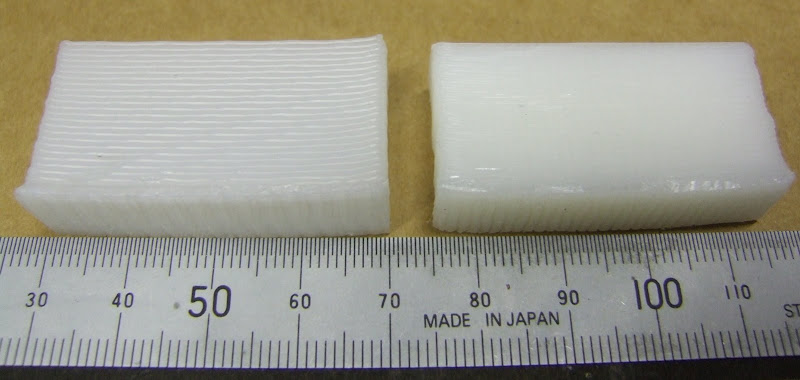The temperature at which I lay down HDPE onto the cutting board is important. At 180°C it does not stick. At 200°C it sticks well but can be peeled off with the help of a penknife. Higher temperatures make it harder to remove and do more damage to the board.
Here are a couple of 15mm test cubes made directly onto the PP board without a raft :-

The one on the left had the first layer extruded at 200°C and subsequent layers at 240°C. As you can see it curled badly, particularly at one corner. The one on the right had its first layer extruded at 220°C. It looked promising but when I tried my standard warp test block the result was not good!

So it looks like the raft is here to stay. Here is an example :-

I lay down the raft at 4mm/s with a notional filament diameter of 1.1mm with the extruder head 1.3mm above the board. This is to get the filament as round as possible so that it doesn't form a solid weld. In actual fact, gravity causes it to slump to about 0.9mm high and spread to 1.3mm wide. The oval area calculation would give 1.34mm and a pitch of 1.3mm is sufficient to get adjacent filaments to stick together. My rationale for making the raft as thick as possible in one layer was to make it strong without taking too much time. It probably does not need to be as strong now that it binds to the PP.
I put the raft down at 200°C, then I do the first layer of the object at 240°C with the fan off to ensure it welds to the raft and then subsequent layers at 240°C with the fan on.
I calculate the amount the raft overlaps the object with this completely arbitrary function :-
def overlap(x):I halved the overlap when I went from foam board to polypropylene.
return x + 10 + 10.0 * (x - 20) / 80





